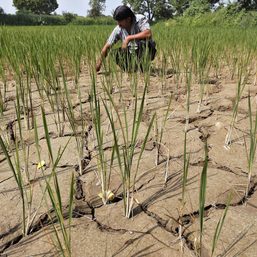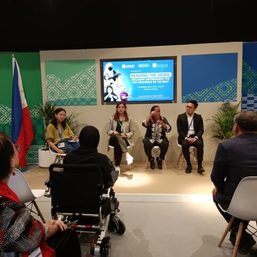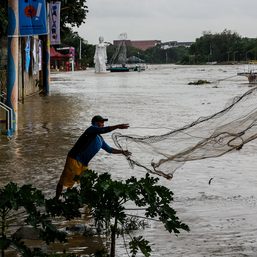SUMMARY
This is AI generated summarization, which may have errors. For context, always refer to the full article.
MANILA, Philippines – Due to a number of recent economic shocks, including fuel and rice crises, a senior research felllow at state-owned think tank Philippine Institute for Development Studies (PIDS) said it may be difficult to bring down the country’s poverty rate to 16.6% by 2015.
The goal to reduce poverty by half is part of the first Millennium Development Goal (MDG). Based on 1991 data, which was the baseline used for the MDGs, the country’s poverty rate was at 33.1% about 21 years ago.
“Maybe the reason why it would be difficult to attain the 2015 target is because there were so many shocks,” Reyes said at the sidelines of the press conference of the 10th Development Policy Research Month on Monday, September 3.
“The poor consists of the chronic or consistently poor all throughout the period, and transient poor who are previously non-poor but become poor because of shocks,”
Some of the recent shocks were the rice and fuel crisis in 2008 which saw inflation hitting a rate of 12.5% in August and the 2009 global economic crisis which caused many to lose jobs.
Reyes said these resulted in an increase in the ranks of the poor, particularly the transient poor. This was already reflected in the 2009 Poverty data released by the National Statistical Coordination Board (NSCB).
In 2009, the country’s poverty incidence increased to 26.5%. This was a 0.1 percentage point increase from the 26.4% recorded in 2006. Currently, poverty data is released every 3 years.
“Because of the shocks and the frequency and intensity of the shocks, we are likely to have significant numbers of transient poor. Unless we have very good safety nets or programs to mitigate, it would be very difficult to reduce the ranks of the poor,” Reyes said.
Why do people become poor?
PIDS President Josef Yap explained that the factors that make Filipinos poor include low educational attainments and large family sizes.
Yap explained that Filipinos with no grade completed have a higher poverty incidence than those who have elementary education. The same is true for those with elementary education would also have a higher poverty incidence compared to those with secondary education.
He added that the number of members in a family also affects poverty incidence. Yap said the higher the number of family members, the higher the poverty incidence.
Yap further said that if, for example, a family has 4 members, the poverty incidence of the family is only around 14% while a family with 9 members may have a poverty incidence of 60%.
“The higher the family size, the higher the poverty rate. So compare a family whose size is 4, the poverty incidence is 14%, 9 is 60%. [This means] that the larger the family size, the larger the chances that you are poor,” Yap said.
“Shouldn’t this be enough evidence to support the RH (Reproductive Health) bill?” he added. – Rappler.com
Add a comment
How does this make you feel?
![[OPINION] In a changing climate, how do we ensure safety and health at work?](https://www.rappler.com/tachyon/2024/04/Climate-change-safety-workers-April-25-2024.jpg?resize=257%2C257&crop_strategy=attention)




There are no comments yet. Add your comment to start the conversation.